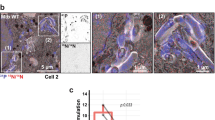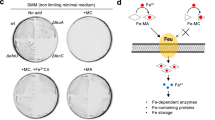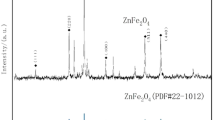Abstract
FROM three quite different lines of investigation it has been postulated that isoniazid kills tubercle bacilli through the intracellular accumulation of hydrogen peroxide1–3. In Micrococcus lysodeikticus, which contains an exceptionally high concentration of catalase, Chance has been able to demonstrate a peroxidase–catalase complex and to show that the peroxide concentration is controlled by the presence of suitable oxygen acceptors within the cell or added externally4. Sensitive though it is, Chance's spectro-photometric method would be difficult to apply to Mycobacterium tuberculosis, which has a very low catalase activity5, and direct chemical determination of intracellular peroxide does not seem possible. It seemed reasonable, however, to test the theory of peroxide accumulation in the presence of isoniazid by growing the bacilli in an excess of a stable exogenous oxygen acceptor capable of penetrating the osmotic barrier of the cell but not inhibiting cell growth. Sodium nitrite appears to fulfil all the requirements in that it reduces free peroxide and reacts rapidly with the catalase–peroxide complex, both in vitro6 and intracellularly4.
This is a preview of subscription content, access via your institution
Access options
Subscribe to this journal
Receive 51 print issues and online access
$199.00 per year
only $3.90 per issue
Buy this article
- Purchase on SpringerLink
- Instant access to full article PDF
Prices may be subject to local taxes which are calculated during checkout
Similar content being viewed by others
References
Knox, J. Gen. Microbiol., 12, 191 (1955).
Winder, Amer. Rev. Tuberc., 73, 779 (1956).
Maher, Speyer and Levine, Amer. Rev. Tuberc., 75, 517 (1957).
Chance, Science, 116, 202 (1952).
Finlayson and Edson, Trans. Roy. Soc. N. Z., 77, 284 (1949).
Chance, J. Biol. Chem., 182, 649 (1950).
Schaefer, Amer. Rev. Tuberc., 69, 125 (1954).
Rider and Mellon, Indust. Eng. Chem., Anal. Edit., 18, 96 (1946).
Mitchell and Moyle, 6th Symp. Soc. Gen. Microbiol., 158 (1956).
Hughes, Brit. J. Exp. Path., 32, 97 (1951).
Author information
Authors and Affiliations
Rights and permissions
About this article
Cite this article
HOLMES, I., RUBBO, S. Rejection of the Peroxide Accumulation Hypothesis of Isoniazid Action. Nature 181, 1203 (1958). https://doi.org/10.1038/1811203a0
Issue date:
DOI: https://doi.org/10.1038/1811203a0



